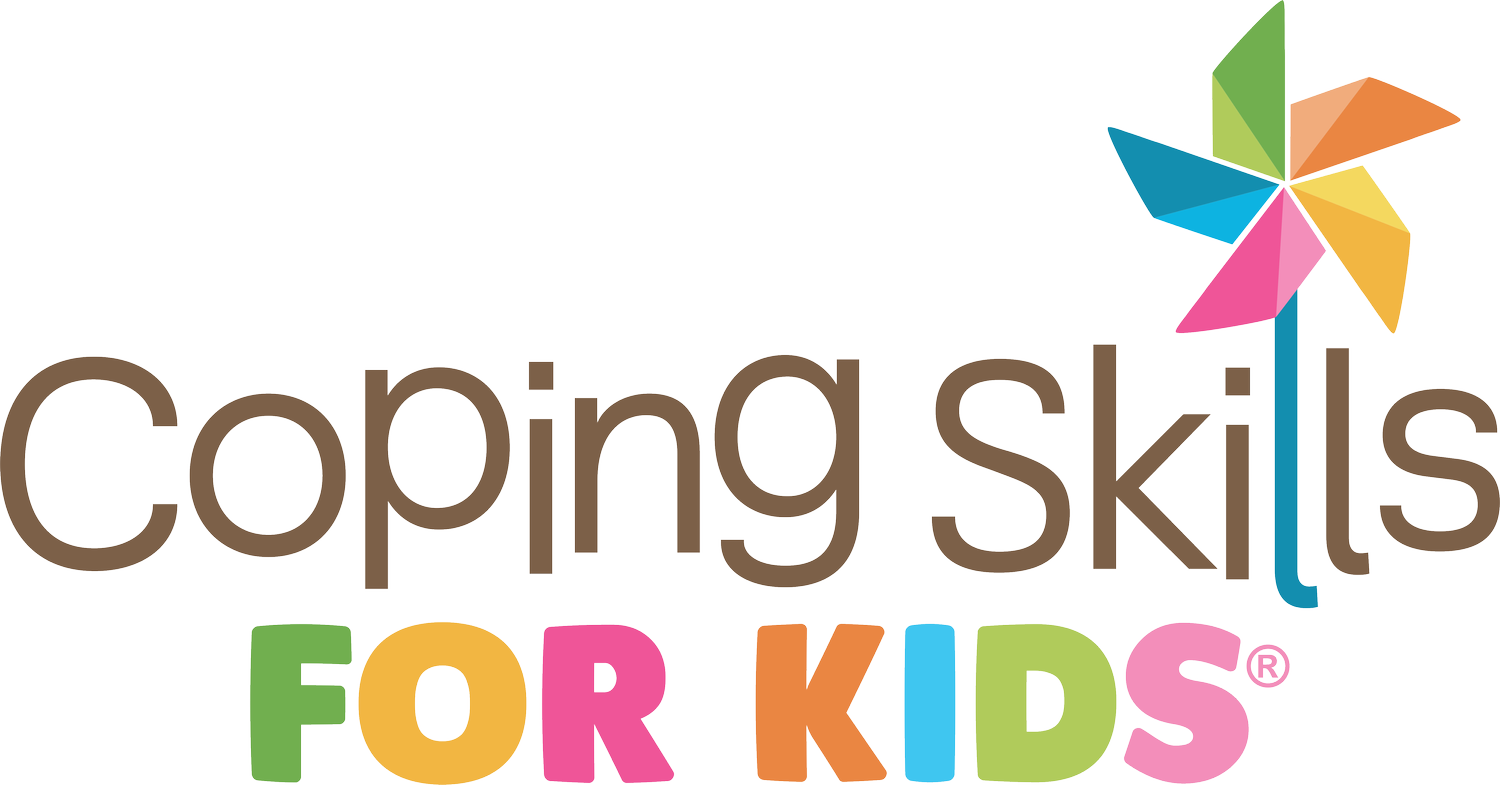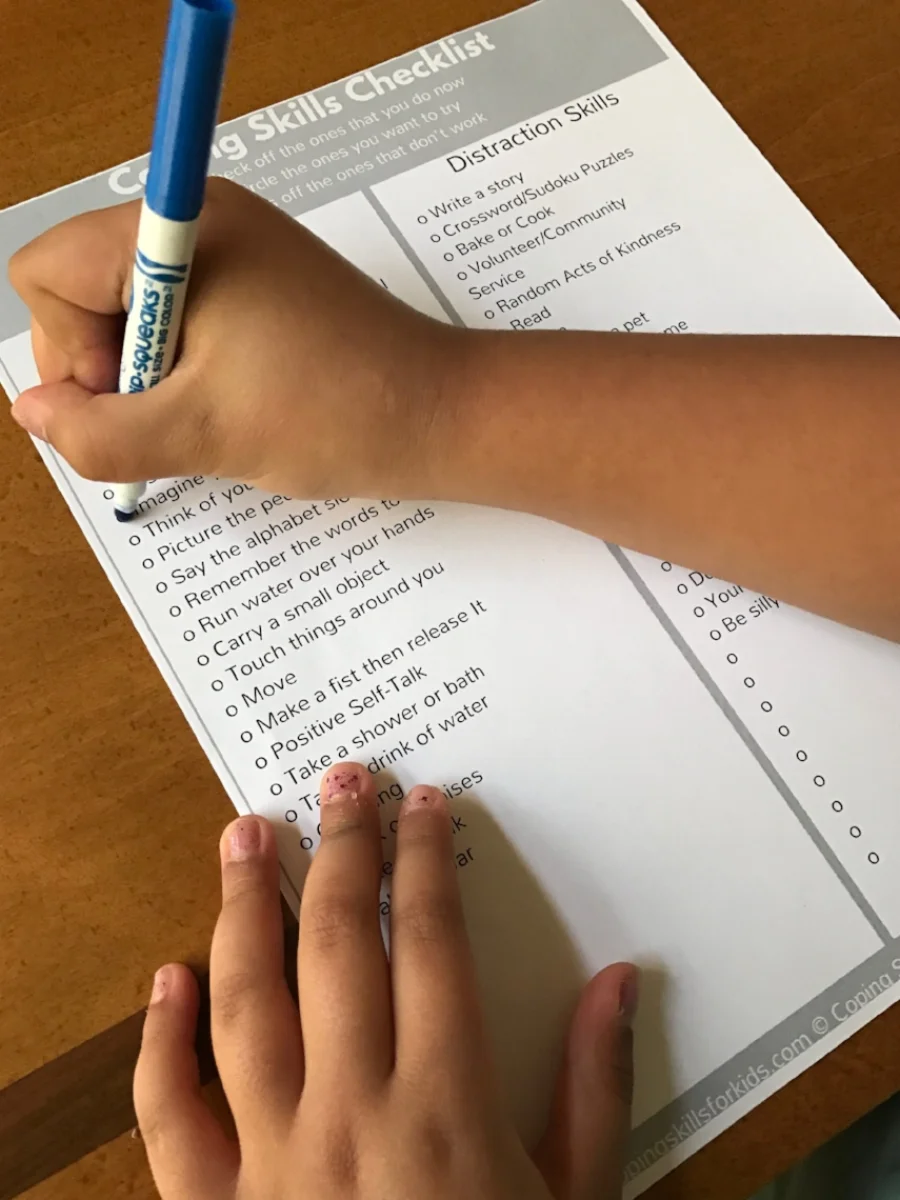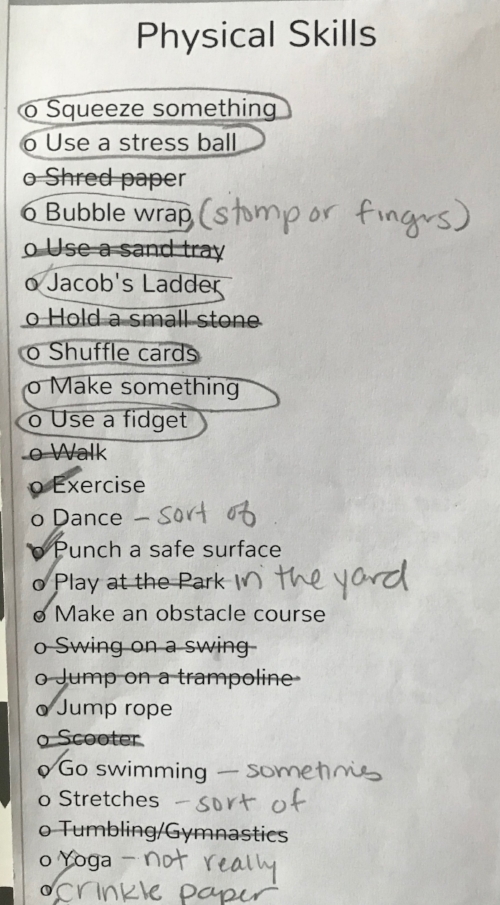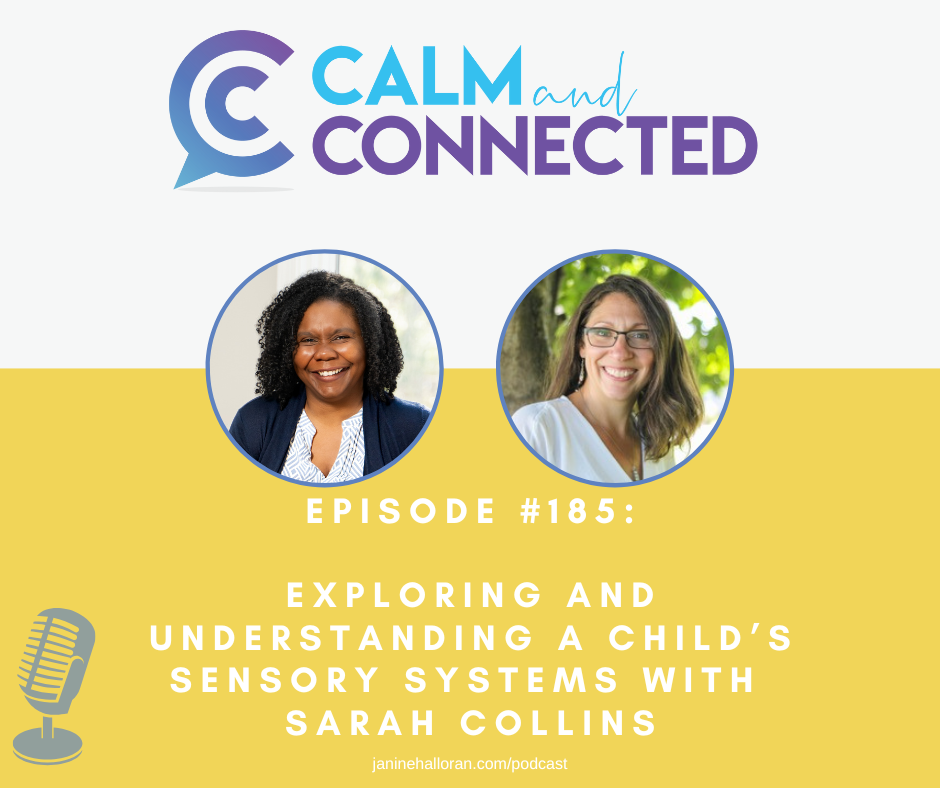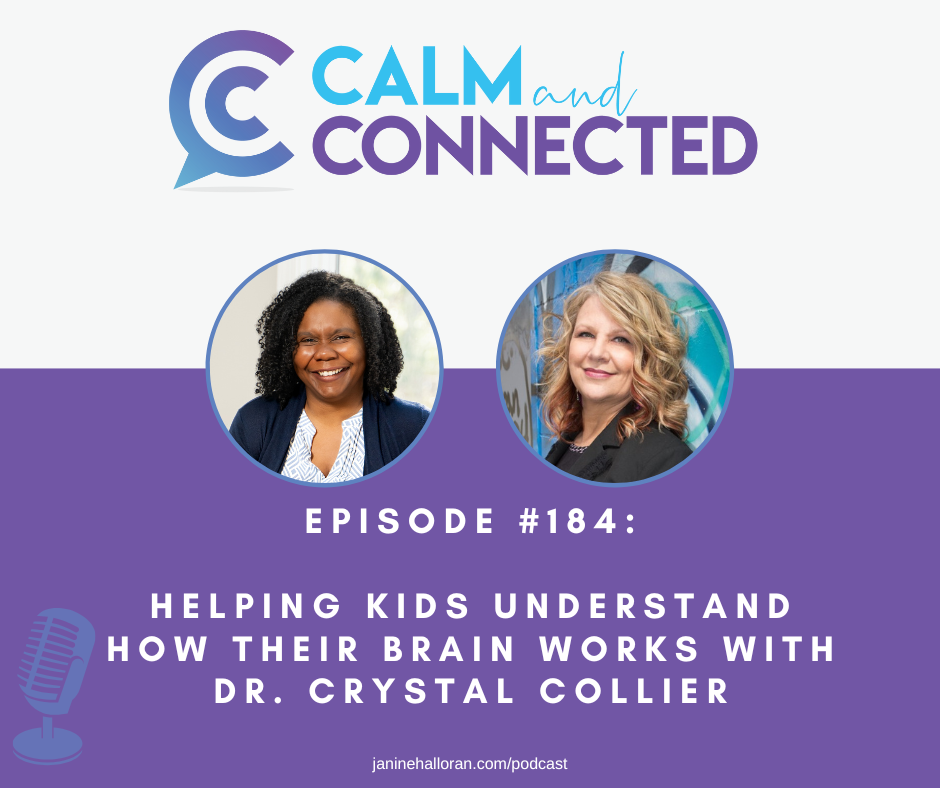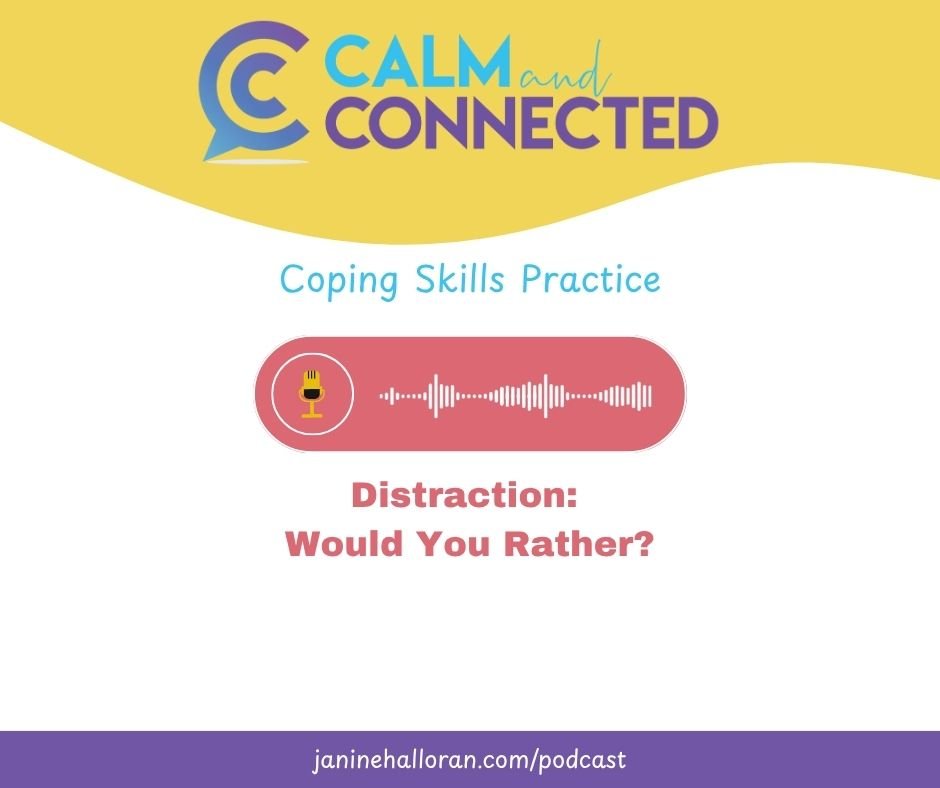Inside: An organized, simple, and effective way to explore a child’s coping skills. This checklist can work one on one, in a small group, or even whole classrooms!
Have you ever seen those coping skills checklists that are super long? I love having a ton of strategies to work from, but it’s very hard to pick out what skills will work for kids from those overwhelming lists. To make it easier, I ended up creating the coping skills checklist. The beauty of this checklist is that it's divided into five categories: Calming, Distraction, Physical, Processing, and Sensory, which makes it easier to find a particular type of coping skill.
Let’s take a few minutes and explore each category.
Calming Coping Skills
These are skills designed to help kids relax. These are a good starting place especially when kids are feeling stressed or anxious or overwhelmed. Strategies like deep breathing, meditation and mindfulness are included in this category.
Distracting Coping Skills
There are times when kids can do something to reduce their worries. But there are a lot of stressful situations that are out of a child’s control. There isn’t anything they can do, but the thoughts are making it hard for them to do work or focus on anything. Then it’s time for them to take their mind off that stress by doing something else.
Let me be clear; distraction skills aren’t a way to avoid the problem. Instead, it’s a way to take their mind off of those challenging, stressful situations. Some examples of distraction coping skills include reading a book, playing a board game or starting a garden.
Physical Coping Skills
Physical coping skills designed to help kids manage excess energy. Especially when kids are angry, they can feel like they want to strike out. Doing some small body movements like squeezing play dough or large body movements like jumping jacks can help kids get that extra energy out in a safe and healthy way.
Processing Coping Skills
Processing coping skills focus on helping kids identify and understand their feelings and directly address those feelings they have. For example, if a kid is struggling with being worried, they can identify where they feel worried in their body and use a worry box.
Sensory Coping Skills
Using your senses is a fantastic way to help kids manage their emotions. Examples of sensory coping skills include things like using a weighted blanket or lap pad, eating something crunchy or using mermaid fabric.
A little more information:
You may have noticed that these categories aren’t hard and fast. For example, some sensory skills could also be put in the category of calming or physical skills. The coping skills categories are there as a framework to make it easier to find a coping skill. For example, if a child is dealing with being angry, you might want to focus on calming and physical coping skills. If a child is dealing with a sick family member, it may make sense to focus on distraction coping skills. If a child is dealing with anxiety, perhaps start by concentrating on calming and processing skills.
Also, this is by no means a comprehensive list. But it is a fantastic starting point to begin exploring ways for kids to manage their feelings. On the checklist, there is room for additional skills to be added to each of the categories.
How to complete the checklist
To complete the checklist, kids should:
* check the ones that work for them
* cross off the ones that they don’t like
* circle the ones they’d want to try.
Before they begin, I caution them from crossing off things they’ve never tried. The whole point of this is to try to add to their coping skills. They need to be open to giving new strategies a chance. They may discover they absolutely love yoga, but they wouldn’t know it worked if they hadn’t given it a try.
Using the checklist with individuals and groups
I’ve used the checklist when I work one on one with kids, in small groups and whole classes. When working one on one with kids, you can either choose to go through the checklist with a child or have them do it independently. For younger kids, I go through each of the sections with them, read the coping skills out loud and discuss it. For older kids, I usually have them do it independently and then go through it together with them after they are done.
When I’m working with older kids in small groups or in whole class instruction, I hand them out and have children do it independently.
An example of the physical coping skills section of the checklist filled out.
Modifications
For some kids, looking at the list can be overwhelming. If that’s the case, break it down into chunks, covering up part of the paper and only going through a few at a time. Sometimes, I take one section at a time per session with a client or small group.
We’ve filled it out - Now what should we do?
Once it’s all filled out, make a list of their current coping skills. This list is powerful! These are things they can use right now to help them manage big feelings. Let them know that these are things they currently do, and that’s awesome! Have them keep a list with them at home, or in their agenda at school so they can remember what they currently do now.
Also, make a list of things they want to try. This list is also extremely helpful. This will help guide you as you start to have them explore new ideas that may work for them, and help them expand their ways of coping!
Get your free coping skills checklist along with worksheets where you can list a child’s current coping skills as well as skills they want to try. Get started today!
